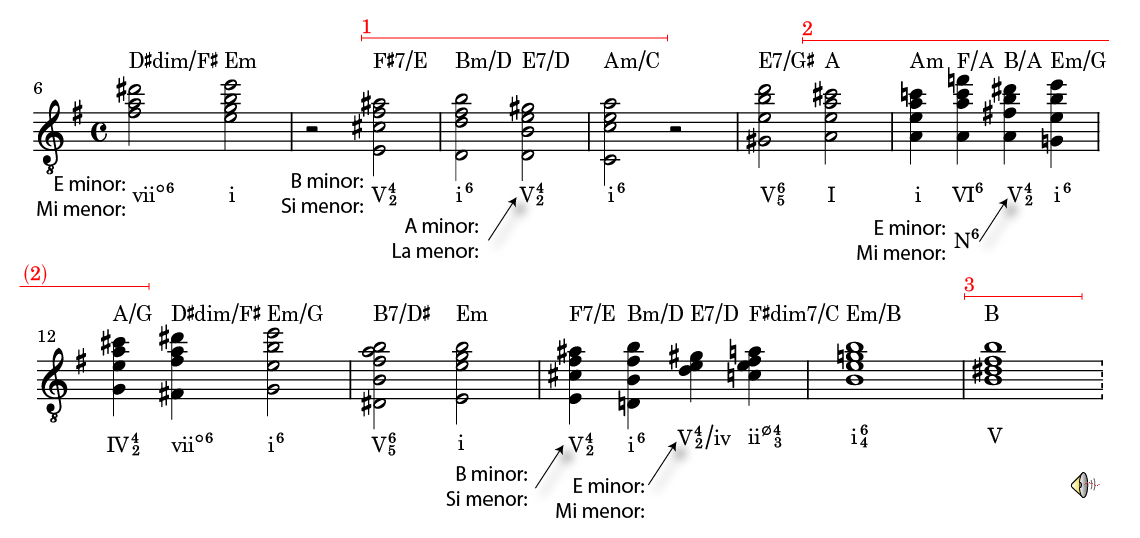Bach - Suite in E minor BWV 996 - Prelude
José Rodríguez Alvira
Passaggio
First bars
The prelude is divided into two sections: a free and improvisatory Passaggio and a contrapuntal Presto.
We begin with a series of sixteenth notes with repetitive patterns that give coherence to the passage. On closer inspection, however, we see how Bach rhythmically modifies and shifts these patterns with each repetition. The following image tries to analyze these transformations:

- The first group of notes is repeated (1 in the image) starting in the middle of the third beat and transposed down a perfect fourth. Note A (highlighted in red) is deleted.
- Transposed a perfect fifth down and starting in the middle of the first beat. Additional notes are added at the end (in red).
- Transposed down a minor seventh (original notes, two octaves lower) and starting in the middle of the fourth beat. Additional notes are added.
- The original notes are repeated an octave lower. The ending is changed to affirm the key of E minor.

This work is licensed under a Creative Commons Attribution-NonCommercial-NoDerivatives 4.0 International License. José Rodríguez Alvira.
Published by teoria.com
